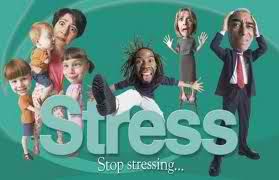The hormones and neurotransmitters (catecholamines and cortisol) that are released during the stress response function to alert the individual to a threat or challenge to homeostasis, to enhance cardiovascular and metabolic activity in order to manage to the stressor, and to focus the energy of the body by suppressing the activity of other systems that are not immediately needed.
Adaptation is the ability to respond to challenges of physical or psychological homeostasis and to return to a balanced state.
The ability to adapt is influenced by previous learning, physiologic reserve, time, genetic endowment, age, health status and nutrition, sleep-wake cycles, and psychosocial factors.
The stress response involves the activation of several physiologic systems (sympathetic nervous system, the HPA axis, and the immune system) that work in a coordinated fashion to protect the body against damage from the intense demands made on it. Selye called this response the "general adaptation syndrome". The stress response is divided into three stages: the alarm stage, with activation of the sympathetic nervous system and and the HPA axis; the resistance stage, during which the body selects the most effective defense; and the exhaustion stage, during which physiologic resources are depleted and signs of systemic damage appear.
The activation and control of the stress response are mediated by the combined efforts of the nervous and endocrine systems. The neuroendocrine systems integrate signals received along neurosensory pathways and from circulating mediators that are carried in the bloodstream. In addition, the immune system both affects and is affected by the stress response.
Adaptation is affected by a number of factors, including experience and previous learning, the rapidity with which the need to adapt accurs, genetic endowment and age, health status, nutrition, sleep-wake cycles, hardiness, and psychosocial factors.
The Relaxation Response
- Sit quietly in a comfortable position.
- Deeply relax all your muscles, beginning at your feet and progressing up to your face.
- Breathe through your nose. Become aware of your breathing. As you breath out, say the word "one" silently to yourself. Continue for 20 minutes. When you have finished, sit quietly for several minutes, first with your eyes closed and then with them open.
- Do not worry about whether you are successful in achieving a deep level of relaxation. Maintain a positive attitude and permit the relaxation to occur at its own rate. Expect distracting thoughts, ignore them, and continue repeating "one" as you breathe out.







0 comments:
Post a Comment